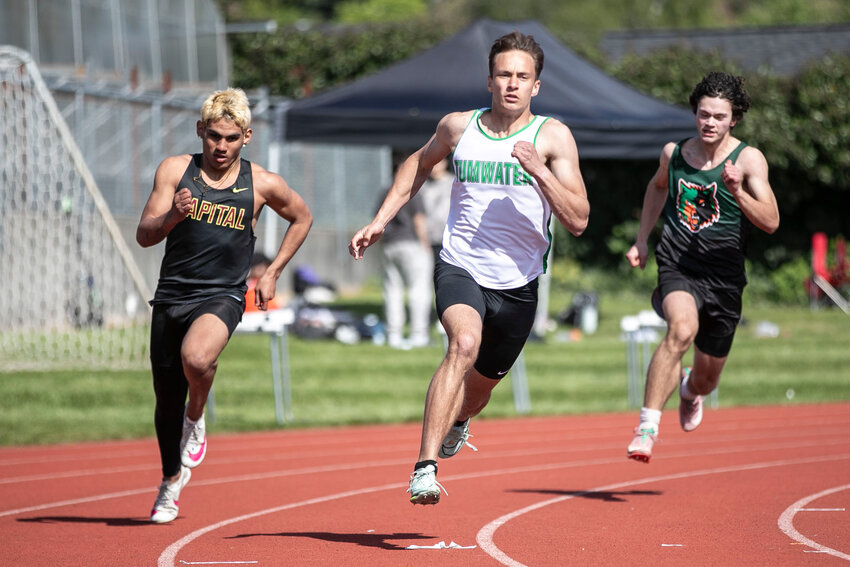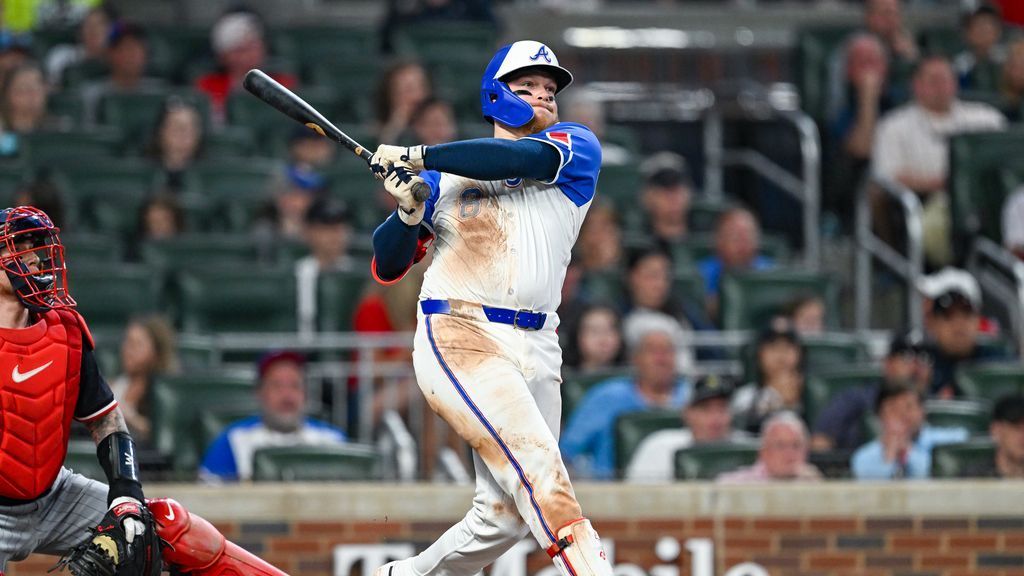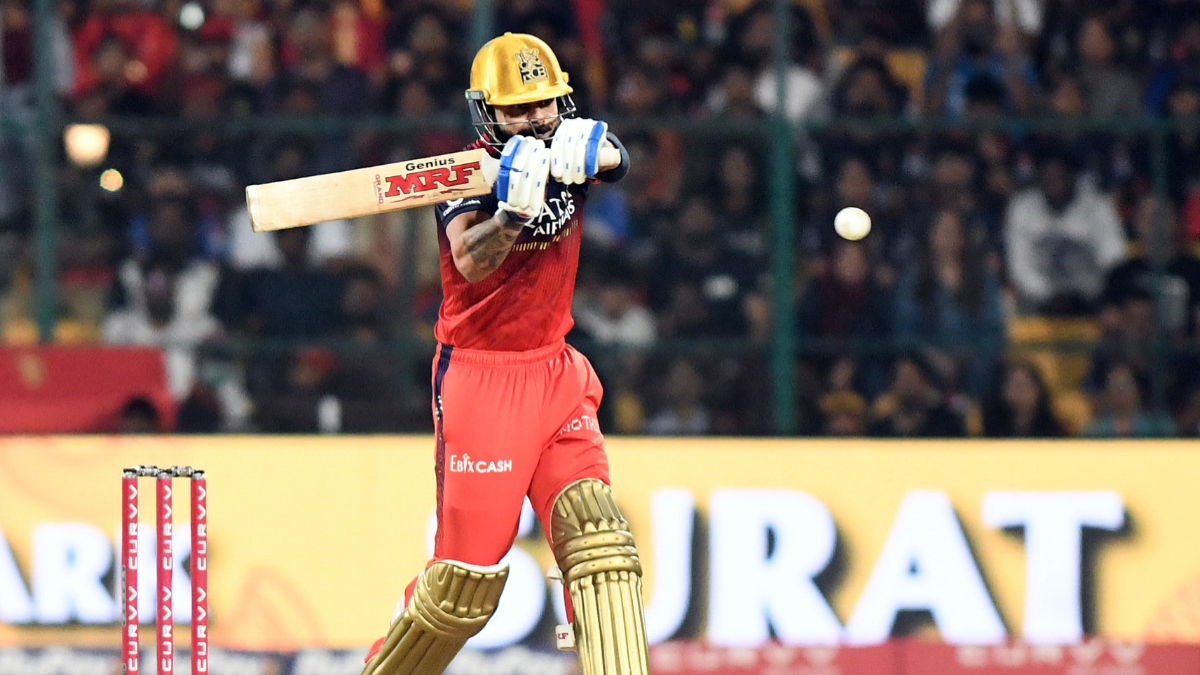There are two notable, very different theater openings in New York tonight. One is guaranteed the lion’s share of headlines: George Clooney playing famed CBS broadcaster Edward R. Murrow in the box-office record-breaking Broadway show Good Night, And Good Luck (Winter Garden Theatre, booking to June 8).
It’s the stage version of the Oscar-nominated 2005 movie. Both were co-written by Clooney and his longtime collaborator Grant Heslov. (Clooney directed the movie.

) The other play, Ken Urban’s Danger and Opportunity, may be lesser known, but is a real treasure to hunt out. It is extremely off-Broadway, in what is the new East Village Basement theatrical space—designed as an apartment for this show, with the audience sitting in the characters’ living room. The play (currently booking to April 20) shows the story of a throuple’s relationship, from easy-breezy flirtation to relationship to implosion.
It may attract fewer flashbulbs than Clooney, but it’s an intriguingly immersive experience. As a piece of politically minded theater, Good Night, And Good Luck, directed by David Cromer, is timely. Featuring a Hollywood star, and with its fanfare opening on Broadway at the heart of Tony Awards season, the importance of its staging during the first months of Donald Trump’s second term is made clear as the performance progresses.
The play focuses on Murrow’s conflict with Senator Joseph McCarthy in 1954 (or “the junior senator from Wisconsin” as Murrow described him), who was then heading the Senate’s Permanent Subcommittee on Investigations targeting those suspected of anti-governmental activities. Murrow and his See It Now team examine McCarthy’s investigations and methods. Emphatic applause breaks out after certain speeches and lines (mainly by Clooney as Murrow), about the importance of standing up to corrupt authoritarianism, countering censorship, and the responsibility of speaking truth to a political power structure intent on spreading lies and misinformation.
The action on stage may be set in the past—in a confrontation played out in separate broadcasts between Murrow and McCarthy played out on TV screens, not direct from the stage to the audience—but the deeply felt audience response is sourced in the present day. As a polemical warning bell, the show is earnest and heartfelt. It is considerably less successful as a piece of theater.
As our audience settled into its seats, an usher asked that noise be kept to a minimum (sad that an audience needs to be asked), indicating the stage and the volume of what might be issuing forth from it. It was good advice; whether it’s acoustics or a production choice or both, the play has a too-quiet, fuzzy feel—until those big-speech moments, which are transmitted via a large screen on stage showing Clooney as Murrow in arresting black-and-white close-up, just as he would have appeared on TV screens in 1954. Playing Murrow is clearly personal for Clooney, a lifelong and eloquently vocal Democrat who famously called—via an op-ed in the New York Times—for Joe Biden to withdraw as the party’s presidential candidate last summer.
He is also a charismatic, handsome movie star, and knows the camera, and so Murrow’s addresses in Good Night, And Good Luck (projection design is by David Bengali) become the show’s standout, anchoring moments. Meanwhile, McCarthy appears in videotape from the era, rather than a character played by an actor, to make a series of baseless accusations about Murrow. This disembodiment feels strange, and denies the play a tension that may have worked well with a living, breathing McCarthy as a character.
While it’s great to have an onstage band (as the 2005 movie also featured), with the beautiful singing of Georgia Heers as a character named as “Ella,” it’s also an odd choice. Ella and the members of the band are not connected to the drama; their singing is used at transitional moments during scene changes, which are themselves another hobbling element with patches of silence as a stage wall periodically opens to facilitate the removal or adding of furniture for the next scene. It’s a bizarrely clunky and distracting process, and adds to the stop-start pacing of the show.
However, the main set—CBS Studios at Grand Central—is Scott Pask’s second Broadway success of the season after his striking Glengarry Glen Ross ransacked office. With atmospheric lighting (by Heather Gilbert) and costume (Brenda Abbandandolo), the play is redolent of its era. Clooney is temporarily no longer king of the silver foxes; he has dyed his hair darker to match Murrow’s.
The drama progresses in fits and starts, though Clooney is supported well by Glenn Fleshler, playing Fred Friendly, Murrow’s producer and head writer (who Clooney played in the 2005 film), and Clark Gregg as Don Hollenbeck, a news reporter on the 11 p.m. news who supports Murrow.
Other characters and storylines are inconsistently and under-drawn (such as Carter Hudson and Ilana Glazer playing a secretly married newsroom couple confronted with signing one of McCarthy’s “loyalty oaths”). It’s a neat touch that, while the show emphasizes Murrow’s righteous crusade, we also see the commercials for detergents that bound his show, making clear that news itself—back then, as now—was entwined with the brute economics of network television. The show also highlights Murrow’s ongoing legacy, both as a seed of the Sunday news and politics shows that endure today, and of the blurring of news and opinion, now commonplace and more nakedly partisan.
As with Sarah Snook’s The Picture of Dorian Gray, this is a show that—inevitably given the subject matter—embraces the use of screens. Here, they are both obstructive and fussy when it comes to the action on stage (which feels detached from the audience), yet also vital for the play’s most arresting moments when Murrow and McCarthy variously address the nation. The look in Clooney’s eyes and the sound of his voice at these moments are twinned transmitters of urgency.
The title of the play is, of course, Murrow’s famous signoff, and when Clooney says “Goodnight, and good luck” for a final time, the last two words are said with a particular emphasis. The audience’s response reveals how the words are received, with our ever-more-unpredictable present day front of mind. In Danger and Opportunity, directed with imaginative flair by Jack Serio, a couple—Christian (Ryan Spahn) and Edwin (Juan Castano)—invite Margaret (Julia Chan), Christian’s childhood friend, over for what becomes a wine-fueled evening of catch-up and jolting revelations.
From there, the bounds of love, intimacy, sexuality, identity, and friendship are all tested to breaking point as the trio become a relationship. All three actors are excellent, especially Chan as the newly introduced fulcrum in the men’s relationship. Loosen your neck muscles before attending.
Serio, who specializes in inventive site-specific theater—like a brilliant Uncle Vanya in a New York apartment—here ensures your head swivels and eyes dart between characters in extremely close quarters as if watching a tense Borg-McEnroe rally. Who wants who, and how something seemingly unworkable can work (until it doesn’t) is played out with the audience as fellow, temporary roommates -meet-eavesdroppers. Stacey Derosier’s lighting takes us in a flick of a switch from scene to scene, day to night, while Frank J.
Oliva’s design is so like an apartment—complete with framed pictures of the actors as their characters—you will want to move in, but maybe without the dysfunctional trio (or hey, maybe with them, you do you etc). If you book for the bright lights of Clooney, also book for Danger and Opportunity and support this new theater space (double win: Veselka is just up the street for supper)..
‘Good Night, and Good Luck’: George Clooney Issues a Dire Warning About Trump’s America

Emilio MadridThere are two notable, very different theater openings in New York tonight. One is guaranteed the lion’s share of headlines: George Clooney playing famed CBS broadcaster Edward R. Murrow in the box-office record-breaking Broadway show Good Night, And Good Luck (Winter Garden Theatre, booking to June 8). It’s the stage version of the Oscar-nominated 2005 movie. Both were co-written by Clooney and his longtime collaborator Grant Heslov. (Clooney directed the movie.)The other play, Ken Urban’s Danger and Opportunity, may be lesser known, but is a real treasure to hunt out. It is extremely off-Broadway, in what is the new East Village Basement theatrical space—designed as an apartment for this show, with the audience sitting in the characters’ living room. The play (currently booking to April 20) shows the story of a throuple’s relationship, from easy-breezy flirtation to relationship to implosion. It may attract fewer flashbulbs than Clooney, but it’s an intriguingly immersive experience.Read more at The Daily Beast.











-1745121369054_v.webp)